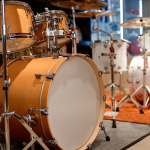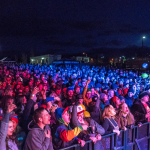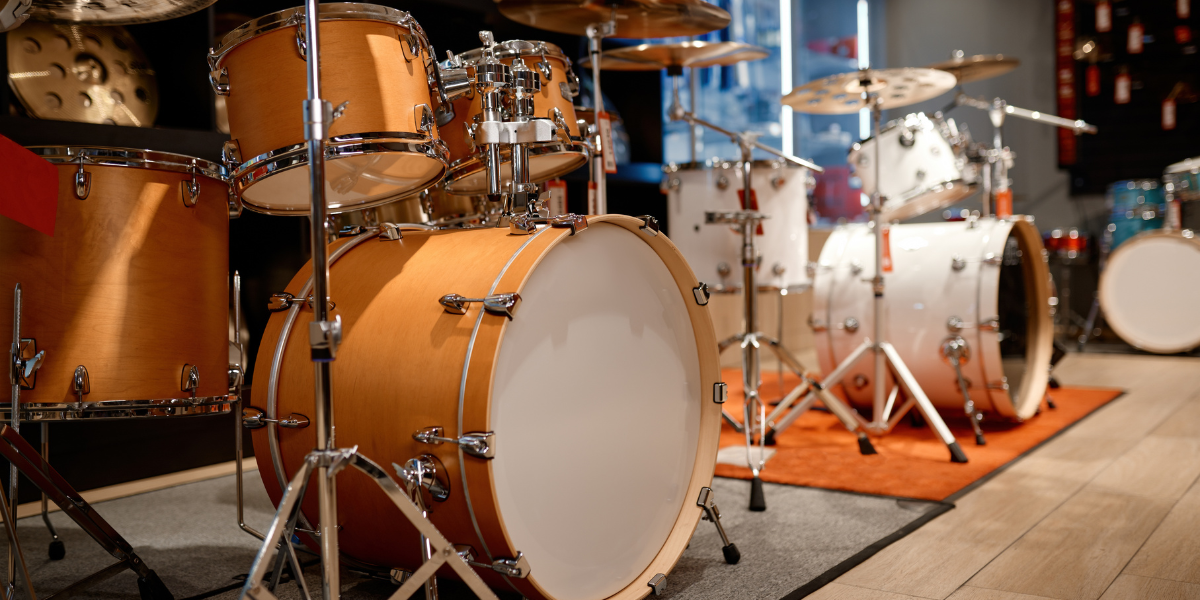Introduction
Sync licensing, also known as synchronization licensing, is the process of granting permission to use music in synchronization with visual media, such as film, television shows, commercials, video games, and online content. It is a mutually beneficial agreement between music creators and visual media producers, allowing the music to enhance the emotional impact and storytelling of the visual content. In this comprehensive guide, we will explore what sync licensing is, how to prepare your music for sync opportunities, the process of obtaining a sync license, and where to submit your music for consideration.
Section 1: Understanding Sync Licensing
1.1 What is Sync Licensing?
Sync licensing refers to the legal agreement between music creators (composers, songwriters, and music publishers) and visual media producers (filmmakers, advertisers, and content creators) to use music in conjunction with visual content. It involves obtaining the necessary rights and permissions to synchronize the music with the visual media.
1.2 Why is Sync Licensing Important?
Sync licensing provides a significant revenue stream for music creators and publishers, while offering a creative and impactful way for visual media producers to enhance their content. It allows music creators to monetize their work, gain exposure, and build their fan base through placements in popular media. For visual media producers, using licensed music adds value to their projects by creating a more immersive and engaging experience for the audience.
1.3 Types of Sync Licenses
There are different types of sync licenses that music creators and visual media producers can negotiate, depending on the specific use and duration of the music in the visual content. These include:
- Master Sync License: This license grants permission to use a specific master recording of a song in synchronization with visual media. It is typically negotiated between the music label or the owner of the master recording and the visual media producer.
- Mechanical Sync License: This license grants permission to use the musical composition (the underlying song) in synchronization with visual media. It is typically negotiated with the music publisher or the songwriter.
- Public Performance Sync License: This license grants permission to publicly perform the synchronized music and visual content. It is typically obtained from Performance Rights Organizations (PROs) like ASCAP, BMI, or SESAC.
Section 2: How to Prepare Your Music for Sync Opportunities
2.1 Creating Sync-Friendly Music
To increase your chances of securing sync licensing opportunities, it is important to create music that is sync-friendly. Here are some key considerations:
- Genre and Style: Different genres and styles of music are suitable for different types of visual media. Understanding the requirements and trends in the industry can help you tailor your music accordingly.
- Instrumentation: Versatile and easily customizable music that can be adapted to fit different scenes and moods is highly sought after by visual media producers.
- Lyrics: Instrumental tracks or songs with lyrics that convey universal emotions and themes are generally easier to place in a variety of visual media.
- Production Quality: High-quality recordings and well-produced music can make your tracks stand out and increase their chances of being selected for sync licensing.
2.2 Clearing Rights and Ownership
Before submitting your music for sync licensing, it is crucial to ensure that you have cleared all necessary rights and have ownership or permission to license the music. This includes obtaining clearance for any samples used in your music and ensuring that you have the rights to license both the master recording and the musical composition.
2.3 Metadata and Documentation
Properly organizing and documenting your music is essential for sync licensing. Some important aspects to consider are:
- Metadata: Include detailed information about your music, such as track title, composer/songwriter information, publisher information, performing rights organization affiliation, contact information, and any relevant copyright or registration numbers.
- Cue Sheets: Create accurate cue sheets that provide a detailed breakdown of your music usage in visual media. These sheets help track and report the usage of your music, ensuring proper royalty payments.
Section 3: The Sync Licensing Process
3.1 Researching Sync Opportunities
To find suitable sync licensing opportunities, you can:
- Research Music Libraries: Explore reputable music libraries and sync licensing agencies that specialize in connecting music creators with visual media producers.
- Follow Industry Trends: Stay updated with the latest industry trends, popular TV shows, movies, commercials, and digital platforms that frequently use music.
- Network: Build relationships with music supervisors, filmmakers, content creators, and other industry professionals who can connect you with sync licensing opportunities. I recomm
3.2 Submitting Your Music for Sync Licensing
When submitting your music for sync licensing consideration, follow these steps:
- Create a Professional Press Kit: Prepare a press kit that includes your bio, high-quality promotional photos, relevant press coverage, and a well-curated selection of your music tracks.
- Research Submission Guidelines: Each music library or sync licensing agency may have specific submission guidelines. Familiarize yourself with these guidelines and follow them carefully to increase your chances of being considered.
- Submit High-Quality Tracks: Ensure that the tracks you submit are of high quality, well-produced, and properly mastered. Consider creating instrumental versions or stems of your songs to provide more flexibility for visual media producers.
- Include Metadata and Documentation: Include accurate and detailed metadata, such as track titles, composer/songwriter information, publisher information, performing rights organization affiliation, contact information, and any relevant copyright or registration numbers. Provide cue sheets if requested. You can download mp3tag to do this for free click HERE.
3.3 Negotiating Sync Licenses
If your music is selected for a sync licensing opportunity, you will enter into a negotiation process to determine the terms of the license. Some key aspects to consider during negotiations include:
- Usage and Duration: Discuss the specific use and duration of your music in the visual media. This includes details such as the scenes or moments where the music will be used and the duration of each usage.
- Fees and Royalties: Negotiate the fees and royalties associated with the sync license. This can include upfront sync fees, backend performance royalties, and any additional fees for extended or international usage.
- Territory: Determine the geographical territory where the sync license will be valid. This can range from a specific country to worldwide.
3.4 Licensing Agreements and Contracts
Once the negotiation process is complete, both parties will enter into a licensing agreement or contract. This agreement will outline the terms and conditions of the sync license, including the rights granted, usage details, duration, fees, royalties, and any other relevant information. It is important to have a clear and legally binding agreement to protect the interests of both the music creator and the visual media producer.
Section 4: Where to Submit Your Music for Sync Licensing
4.1 Music Libraries and Sync Licensing Agencies
There are numerous music libraries and sync licensing agencies where you can submit your music for sync licensing opportunities. Some popular ones include:
- AudioJungle: A marketplace for royalty-free music and sound effects.
- Musicbed: A platform that connects music creators with filmmakers, brands, and agencies.
- Pond5: A global marketplace for royalty-free music, stock footage, and other media assets.
- Artlist: A subscription-based platform that offers high-quality music licensing for video creators.
- Getty Images Music: A renowned provider of stock music and sound effects for various media projects.
4.2 Music Supervisors and Industry Professionals
Building relationships with music supervisors and industry professionals can also open doors to sync licensing opportunities. Attend industry events, join professional organizations, and network with professionals in the music and visual media industries. Websites like LinkedIn and music industry forums can be valuable resources for connecting with potential collaborators and sync licensing opportunities.
Conclusion
Sync licensing offers a valuable opportunity for music creators to monetize their work and gain exposure, while providing visual media producers with the means to enhance their content through music. By understanding the sync licensing process, preparing your music for sync opportunities, and strategically submitting your music to reputable music libraries and agencies, you can increase your chances of securing sync licensing opportunities and expanding your reach in the industry. Remember to stay persistent, continue creating high-quality music, and adapt to the evolving trends and demands of the visual media landscape.
Author Profile

- Jasper Jones, hailing from Newfoundland, Canada, is a seasoned music marketing professional. He played a crucial role in Youngboy NBA's breakthrough with the mixtape "Until Death Call My Name" in 2018. Recently, he collaborated with Charmaine, executing a successful marketing campaign for her debut single "Bold" on SoundCloud. This propelled Charmaine's career, earning her a spot in the exclusive "First on SoundCloud" program. Jasper's track record and passion make him a powerful force in music marketing, driving artists to lasting success.
Latest entries
 Sync LicensingOctober 12, 2023The Complete Guide to Sync Licensing: What It Is, How to Prepare, the Process, and Where to Submit
Sync LicensingOctober 12, 2023The Complete Guide to Sync Licensing: What It Is, How to Prepare, the Process, and Where to Submit Booking ShowsOctober 5, 2023Booking a Hip Hop Show in 2023: An In-Depth, Unfiltered Guide
Booking ShowsOctober 5, 2023Booking a Hip Hop Show in 2023: An In-Depth, Unfiltered Guide Music MarketingOctober 4, 2023Targeting Your Niche: A Practical Guide to Finding Your Audience
Music MarketingOctober 4, 2023Targeting Your Niche: A Practical Guide to Finding Your Audience Guerilla MarketingOctober 1, 2023Amplify Your Sound: How Guerrilla Marketing Can Grow Your Local Music Scene
Guerilla MarketingOctober 1, 2023Amplify Your Sound: How Guerrilla Marketing Can Grow Your Local Music Scene


0 Comments